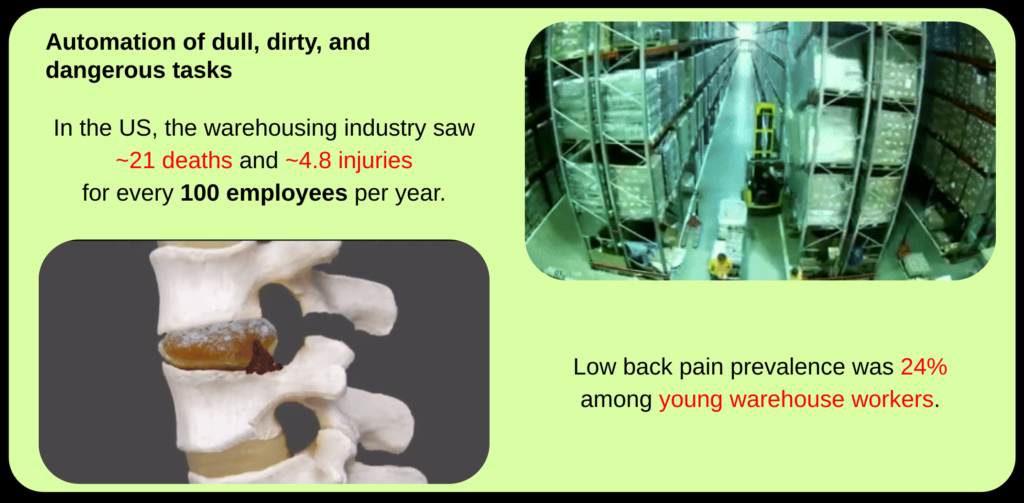Warehouse injuries affect 4.8 per 100 employees annually.

Mobile manipultors need to navigate human-built spaces but require costly infrastructure modifications, to shelving systems and the floor layout.
With the warehouse automation market projected to grow from $16 billion to $54.53 billion by 2029, and with a growing labor shortage this problem would only exacerbate.
There is a need for plug-and-play automation for warehouses majorly designed for direct human involvement….

